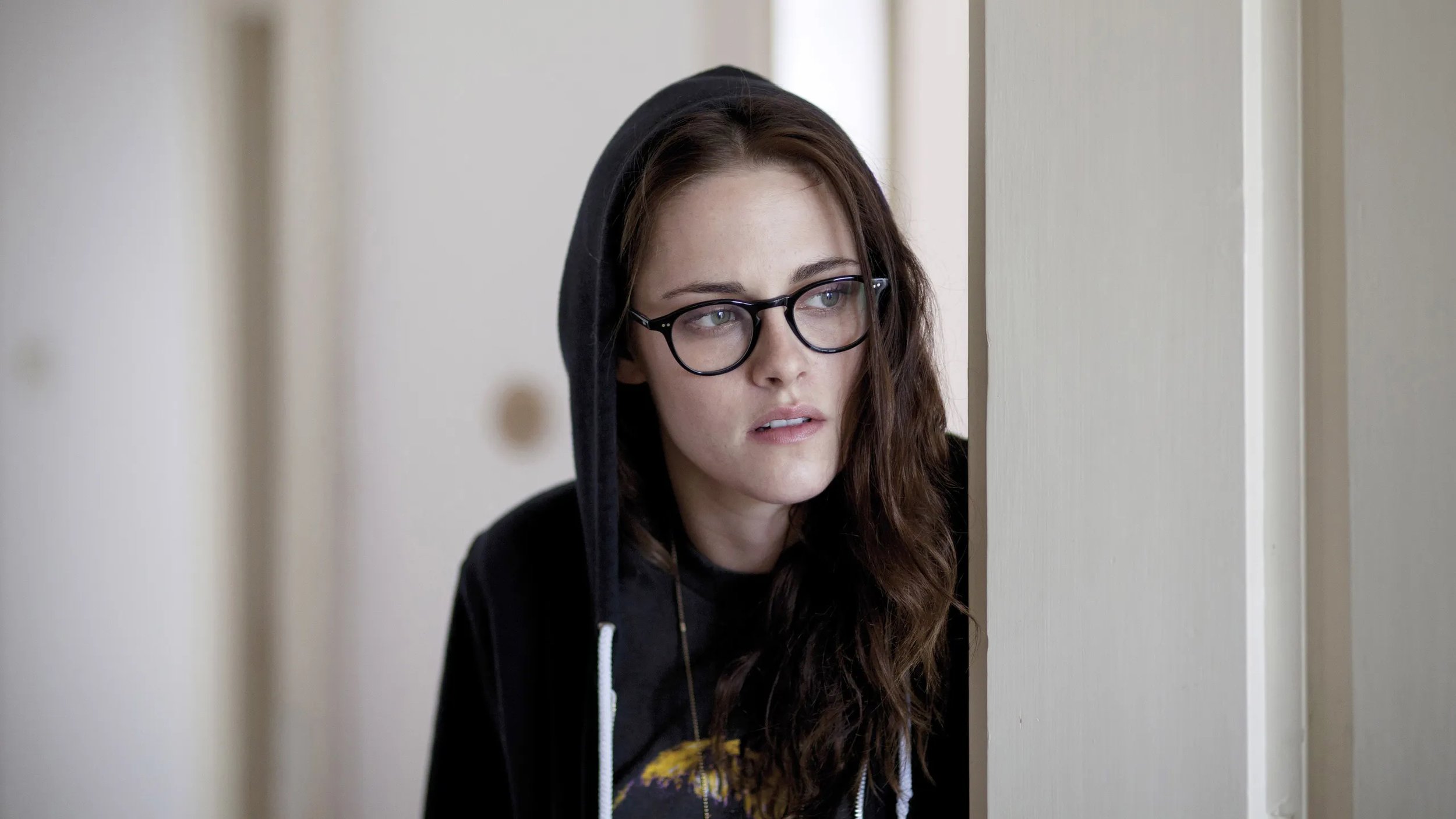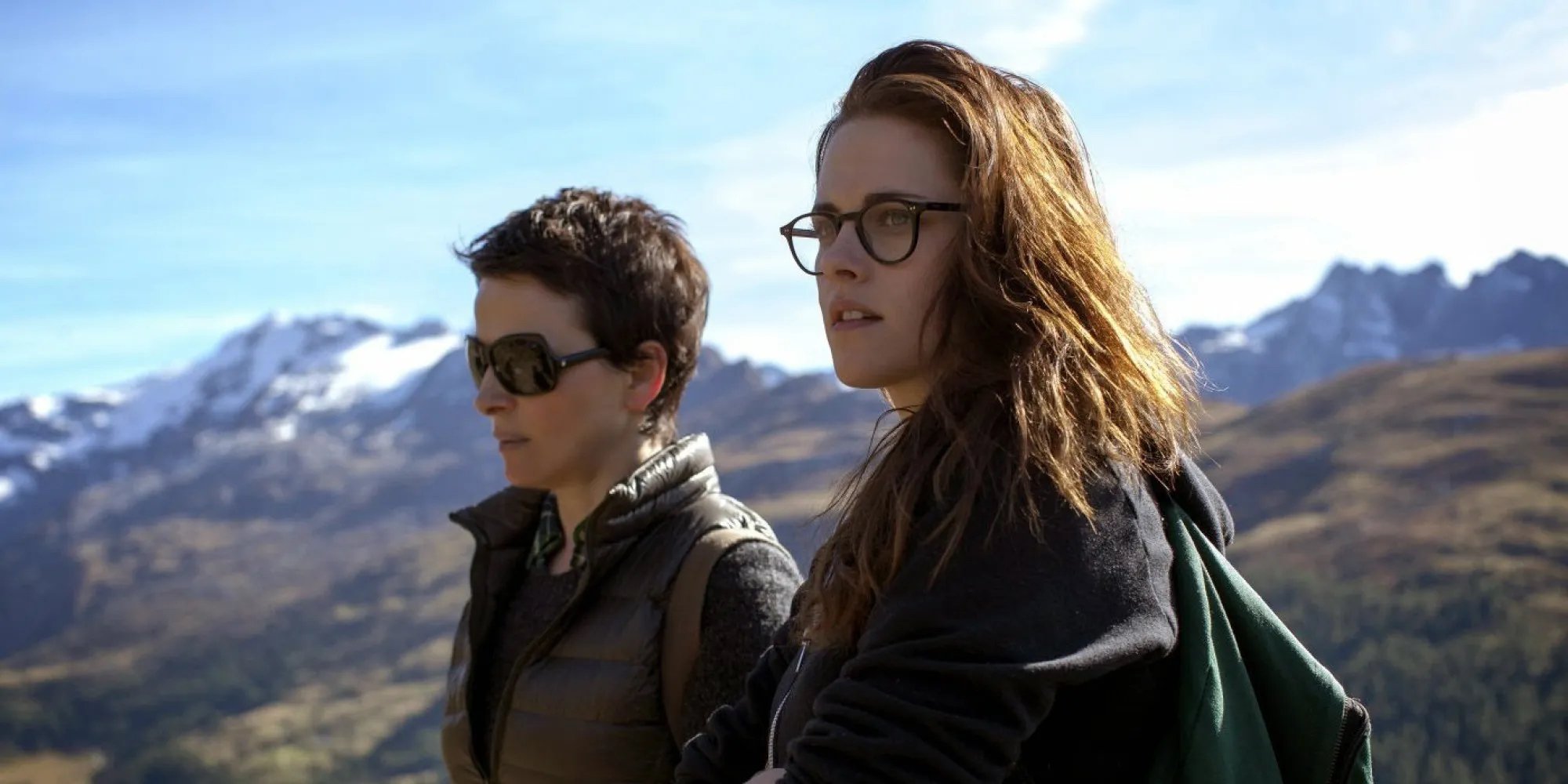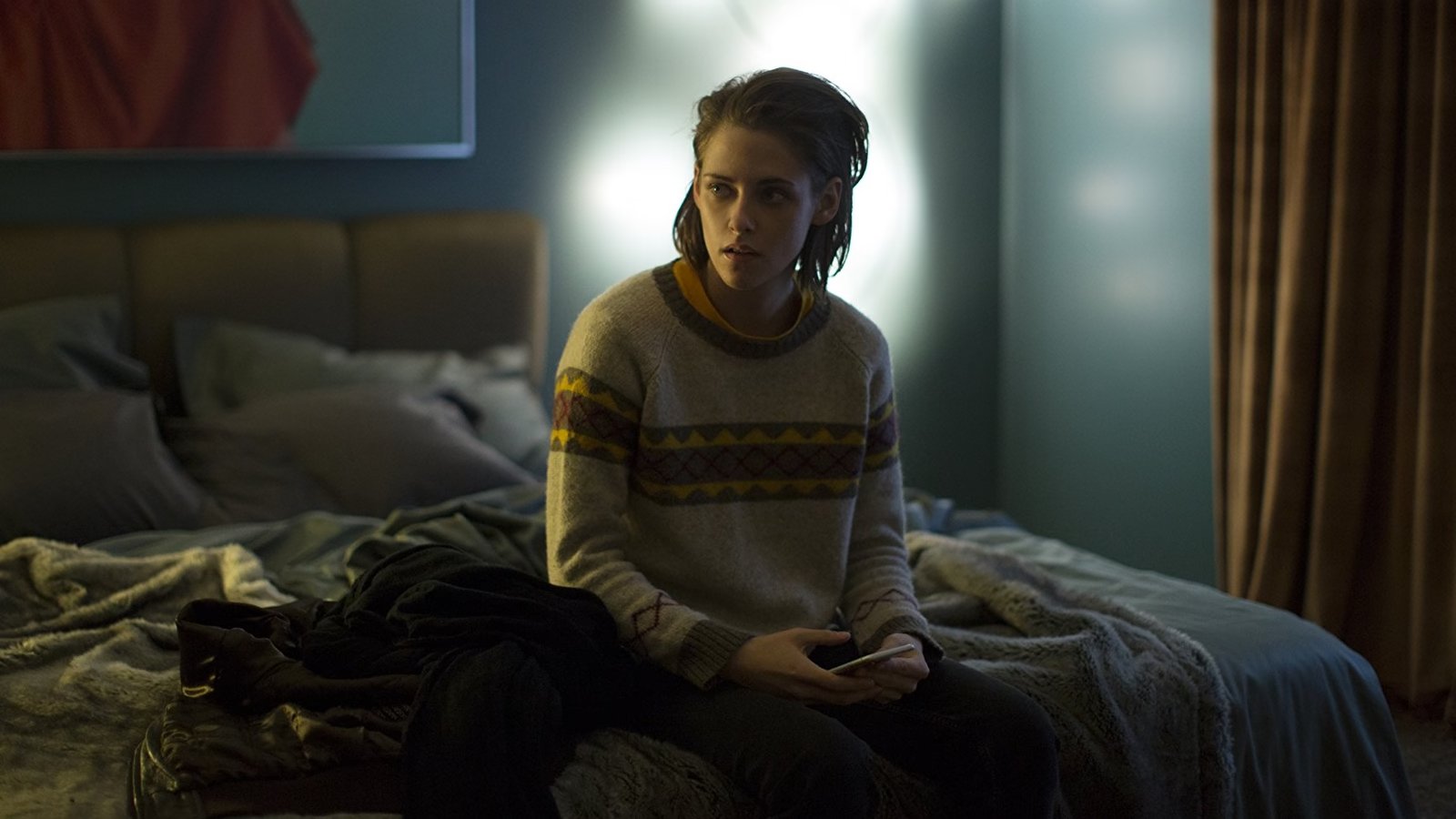“I Think She’s Got a Bright Future” Kristen Stewart + Olivier Assayas
Kristen Stewart’s career is presently in such a healthy place - award-winning actress, queer icon and activist, all-around beacon of Cool - it’s easy to forget that it wasn’t long ago she was a (very successful, very famous) punchline. Twelve years after the theatrical release of The Twilight Saga: Breaking Dawn - Part 2, that franchise is still a beloved touchstone of millennial pop culture and YA fantasy; however, if you informed a Moviegoer of Taste in 2012 that Bella Swan herself would soon be working with bona fide, internationally respected auteurs, nabbing a bevy of prestigious awards, her face adorning multiple films in the hallowed Criterion Collection, you might receive some arched eyebrows.
Such was the prevailing attitude about Stewart at the height of Twilight-mania from both detractors and even some fans of that epic of vampires, werewolves, and deep sighs: she’s wooden, she’s boring, she’s aloof, she can’t emote, she’s just bad. Her personal life was also low-hanging fruit, with hookups, breakups and everything in between regular fuel for the celebrity gossip machine.
Stewart is just as famous now, but the cultural winds have shifted considerably. She has worked on many films since the Twilight days - some excellent, some not so good, all of them at the very least interesting to watch because Stewart is always interesting to watch, a preternaturally intelligent, intuitive actress who can make even the act of scrolling on a phone captivating cinema. Olivier Assayas understood this earlier than most, and no discussion of Stewart’s gifts as an artist (nor indeed a discussion of how those gifts went from mocked to embraced) can overlook the two films she made with Assayas, Clouds of Sils Maria (2014) and Personal Shopper (2016).
The two films are quite distinct works, although we can check off several notable similarities: both feature Stewart playing decidedly unfamous, unglamorous underlings to famous, glamorous celebrities; both directly and playfully interrogate Stewart’s movie star image and her alleged limitations as an actress; both emphasize the isolation of 21st century communication technology as well as the intertwined, dueling forces of fame and art, themes certainly befitting the director of Irma Vep and demonlover.
Sils Maria works in direct, oftentimes hilarious dialogue with the cultural perception of Stewart at the height of her Twilight fame. Stewart plays Valentine, a competent, accommodating, and undervalued personal assistant to Juliette Binoche’s Maria. Maria is a respected, famous thespian of the screen and stage who reluctantly agrees to return to the play that launched her career decades earlier, only now called to act the older half of an ill-fated, May-December lesbian romance. The younger character, the one Maria once owned, is to be played by Chloë Grace Moretz’s Jo-Ann Ellis, a rising star of blockbuster sci-fi/fantasy movies, antagonistic darling of the paparazzi, and not exactly a recipient of much critical respect. Sound familiar?
The heart of Sils Maria lives in the two-hander scenes between Binoche and Stewart, both uniformly excellent as they spar, tease, comfort, and exasperate each other in equal measure. Maria and Valentine have stolen away to the titular Swiss locale for the former to reacquaint herself with the play she once knew intimately as a younger actress. Maria enlists Valentine to read through the text of the play with her, whether the latter likes it or not. Indeed, Valentine seems to serve as Maria’s emotional support human more than a traditional assistant, navigating her insecurities and shifting moods when not coordinating hotel bookings and press interviews.
There’s great pleasure in watching Binoche and Stewart run lines, staged in a series of tense, brutally funny scenes, and while the layered meta-ness of it all isn’t subtle, it’s still worth examining. We’re watching Binoche and Stewart, two accomplished, famous actresses, playing characters (one of whom is also an accomplished, famous actress) in a movie rehearsing lines for different characters that also happen to reflect the undercurrent of complicated intimacy that Maria and Valentine share. Extra points for the extra layer of Stewart convincingly portraying Valentine as a rather unconvincing actress, until we begin to detect she’s much more attuned to this material and Maria’s unspoken desires than previously assumed.
Admittedly, this stuff isn’t rocket science, nor is this the first film to portray the blurring of lines between art and reality. Assayas’ staging of these scenes, though, is deceptively simple. A conversation between Maria and Valentine shortly after running lines unmistakably parallels the scene they were just rehearsing; this is wisely not underlined by Assayas’s camera or Binoche and Stewart’s performances. It’s just there, simmering, for us to feel and for them to leave unspoken. There’s a sense of play here between director, actresses, and audience.
It would be lazy and reductive to limit these performances to only their real-life counterparts: Binoche, Stewart, and Moretz all playing fictionalized versions of themselves. Yes, intentional parallels are there, but the movie is up to more interesting, thornier stuff. Obvious as it seems in hindsight, it took a rewatch to clue in on the fact that Moretz isn’t riffing on herself so much as she is Stewart circa 2010, a young starlet famed more for big-budget, CGI-heavy franchise fare and paparazzi drama than her actual talents as an artist.
In the key scene of Sils Maria, we watch Stewart defend the merits of those movies to the dismissive Binoche, that one can find artistry and honest, complex performances in heightened popcorn fare as well as prestige projects. There’s a key line when Stewart observes that Bincohe would have no problem engaging with the material if the movie were set “on an assembly line or a farm,” but because it’s set on a spaceship and marketed to teens, it’s treated as cultural detritus. One can’t help but think about how much shit Stewart received as an ostensibly weak actress for the Twilight films before she moved on to more esteemed, Criterion-friendly directors like Ang Lee, Kelly Reichardt, and, well, Olivier Assayas.
Assayas has spoken in interviews of beginning to conceive Personal Shopper during the production of Clouds of Sils Maria, a fortuitous bit of artistic kismet that led to his collaborating with Stewart yet again, this time for an even deeper, richer, and melancholic undertaking. It is also, wholly and completely, Stewart’s show.
As Maureen, the titular personal shopper to a wealthy fashion model, Stewart uses her trademark aloof demeanor to devastating effect. Maureen’s twin brother Lewis has recently died, an apparent freak episode resulting from the same heart condition that Maureen shares. Maureen, a self-described medium, attempts to make contact with Lewis’ spirit however and wherever she can. Personal Shopper isn’t interested in mysterious ambiguities with regard to the reality of spirits: the film quickly makes clear that they’re here, and Maureen can communicate with them. What isn’t so clear, though, is if she can make such contact with Lewis, or vice versa, and, if so, if it even matters. He’s still gone, and she is still bereft.
Assayas is less interested in traditional plot or standard ghost story beats than in establishing a hazy, hypnotic, and, at times, achingly sad atmosphere. Stewart shops and purchases clothes for her supermodel employer and occasionally tries them on in quiet acts of erotic insubordination; Stewart Skypes with a boyfriend from whom she is geographically and emotionally distant; she begins texting with an unknown number who could be the digital spirit of her dead brother...or maybe not. A good chunk of this movie consists of Stewart texting. Lots and lots of texting. But therein lies the transfixing allure of Personal Shopper: Stewart makes the experience of watching someone text strangely riveting. Rarely has someone imbued the act of looking at a phone with so much internal anguish and longing as Stewart does here.
Personal Shopper is also as quietly devastating a portrait of 21st century digital alienation as anything I’ve seen. Stewart glides in and out of hotels, apartments, shops, and trains like a ghost herself, her eyes rarely drawn away from her device, whether she’s texting with maybe-Lewis or watching YouTube videos about effective communication with spirits. Personal Shopper would make for a potent and bleak double feature with Kiyoshi Kurosawa’s Pulse, another haunting, haunted movie about sad screens and sad spirits.
It’s fitting, when approaching these films as a pair, that Clouds of Sils Maria introduces Stewart on her phone while on a moving train, a uniquely arresting image that Assayas would expand to epic proportions in Personal Shopper. The latter’s final shot involves Stewart looking straight into the camera, her eyes radiating quiet intelligence and guarded vulnerability. It’s to Assayas’s credit, and to our benefit, that he understands the power behind those eyes, and trusts in them the final word.
If you enjoyed this article, please consider becoming a patron of Hyperreal Film Journal for as low as $3 a month!




Christopher Giles is an educator and former video store layabout who now resides in Houston. When not teaching, he can be found doting on his ornery cat while hunched over a pile of dusty horror paperbacks.